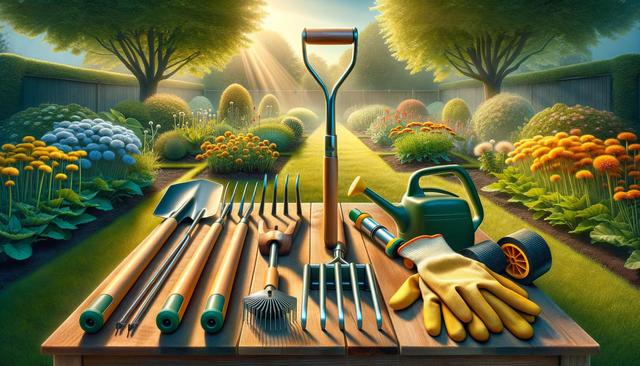Understand the Types of Weeds First
Before jumping into weed removal strategies, it’s essential to identify the types of weeds you’re dealing with. Weeds generally fall into three categories: annuals, biennials, and perennials. Each type requires a slightly different approach for effective removal. Annual weeds, such as crabgrass, complete their life cycle in one season and are relatively easy to control. Perennials like dandelions and bindweed, however, can regrow from roots and require more extensive efforts. Knowing what you’re up against helps in choosing the most suitable method to get rid of weeds in your garden.
Common weed types to look out for include:
- Broadleaf weeds (e.g., clover, plantain)
- Grassy weeds (e.g., foxtail, quackgrass)
- Sedges (e.g., nutsedge)
Identifying weeds accurately allows gardeners to apply targeted treatments and avoid harming desirable plants. Misidentification may lead to wasted time and ineffective remedies.
Manual Removal Techniques That Work
Hand-pulling is one of the oldest and most straightforward methods to get rid of weeds in your garden. It’s especially effective when the soil is moist, allowing roots to come out more easily. For larger areas, tools like hoes, weed pullers, or even flame weeders can help reduce physical strain and improve efficiency. While manual removal can be time-consuming, it eliminates the need for chemicals and is safe for all garden plants.
To make the process more effective, consider these tips:
- Pull weeds before they set seed to prevent spreading
- Use a weeding tool to remove deep-rooted species completely
- Inspect your garden weekly to catch new growth early
Though this method requires consistency and patience, it’s an eco-friendly way to maintain a weed-free garden over the long term.
Smothering and Mulching to Suppress Growth
Mulching is a widely used and effective method to suppress weeds naturally. Organic mulches such as straw, shredded bark, or compost not only block light but also enrich the soil as they decompose. Inorganic mulches like landscape fabric or gravel can also be used, especially in pathways or around shrubs where long-term weed control is the goal.
Benefits of mulching include:
- Reduces sunlight exposure, inhibiting weed germination
- Helps retain soil moisture and regulate temperature
- Improves soil structure when using organic materials
For particularly stubborn areas, gardeners can also use the smothering method by covering the ground with cardboard or newspaper before adding mulch. This starves weeds of light and oxygen, making it harder for them to thrive.
Natural Remedies and Homemade Solutions
For those looking to avoid commercial herbicides, several natural remedies can help get rid of weeds in your garden. One of the most common options is a vinegar-based solution, often mixed with a small amount of dish soap to help the liquid adhere to leaves. While effective for young weeds, this method generally works on contact and may require multiple applications.
Other homemade solutions include:
- Boiling water: Ideal for driveways or sidewalk cracks
- Salt: Can be effective but should be used sparingly to avoid harming soil health
- Corn gluten meal: Acts as a natural pre-emergent herbicide
These methods are most suitable for spot treatments and should be applied carefully to avoid damaging nearby plants. They offer an alternative for gardeners who prioritize environmentally conscious practices.
Preventive Strategies for Long-Term Control
While removing existing weeds is important, preventing future growth is equally critical for maintaining a healthy garden. One of the most effective prevention strategies is maintaining dense and healthy plant coverage. When desirable plants occupy all available space, weeds have fewer opportunities to establish themselves.
Additional preventive measures include:
- Regularly turning soil to disrupt weed seed growth
- Using pre-emergent treatments early in the season
- Maintaining clean garden tools to avoid spreading seeds
Committing to a consistent garden care routine, including regular watering, fertilizing, and pruning, ensures that your plants stay strong enough to outcompete weeds. Prevention might not eliminate weeds entirely, but it significantly reduces the effort needed for ongoing maintenance.
Conclusion: Take Control of Your Garden Naturally and Effectively
Getting rid of weeds in your garden doesn’t have to be overwhelming. By understanding weed types, applying manual and natural solutions, and implementing preventive strategies, you can cultivate a healthy, thriving outdoor space with fewer interruptions. Whether you prefer hands-on techniques or natural remedies, consistent care and attention will go a long way in keeping your garden weed-free. Choose the methods that align with your gardening style and environmental values, and enjoy the benefits of a more manageable and vibrant garden.




Leave a Reply